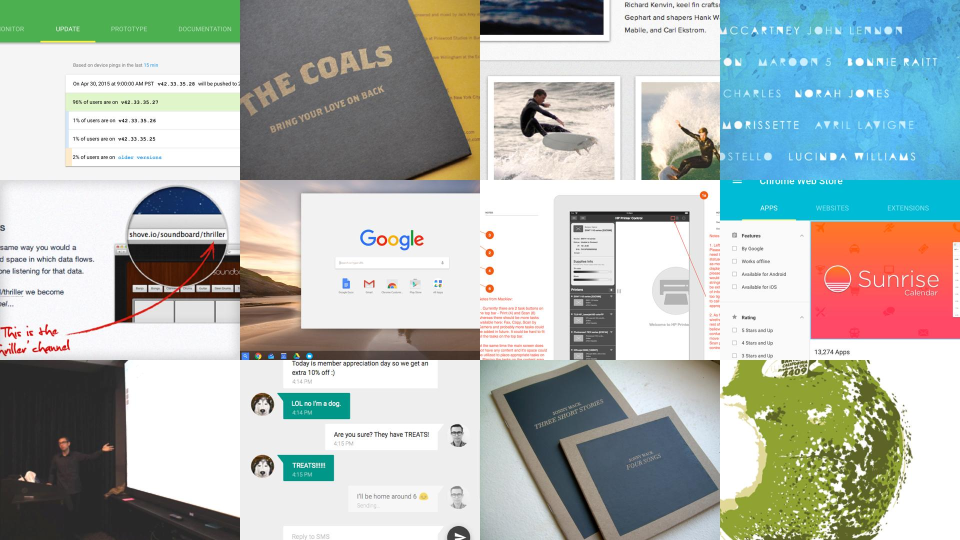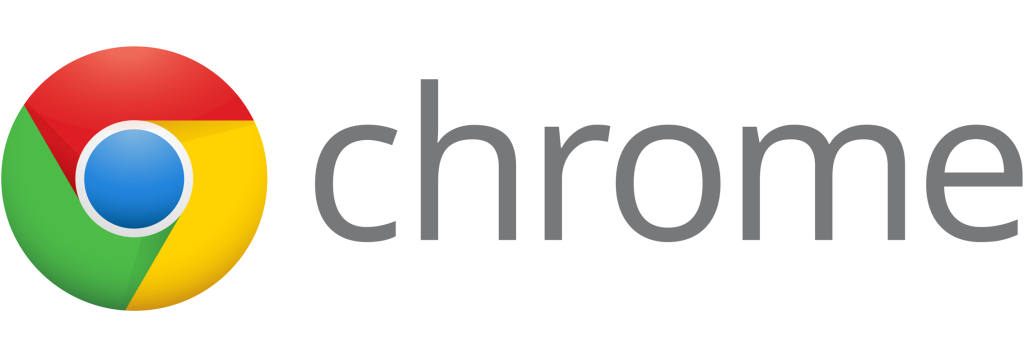
A compilation of Jonny Mack’s work. See more on his Dribbble
Jonny Mack is a designer at Google. Jonny shared his articulate thoughts on the role design plays in shaping what is possible. Speaking to SCCA earlier this year, he encouraged students to keep honing skills of critical thinking, collaboration, and to never stop learning.
Jonny’s background has seen him in studios, agencies, startups, and multinational corporations as an apprentice, freelancer, consultant, co-founder, and in-house designer. Bringing design into a diverse list of interests, he travels, reads about critical economic theory, snowboards and continues his screenprinting background from his time working as an apprentice to Shepard Fairey.
We got to ask Jonny a bunch of questions about his background, his process, and some advice for entering the design field. Check out his insightful responses below.
Tell us about the work you do at Google Chrome? Walk us through a day at work for you.
I work on a few different loosely-related projects at Google, namely Chrome OS and Android system UI. I’m focused primarily on “multi-user UX”, so I think a lot about how devices are shared (at school, work, and home) as well as identity and security (locking and unlocking devices, adding and editing accounts, switching between users, etc.) It’s a complicated space, there’s a lot to consider, and it’s mostly an uphill battle as there’s quite a bit of legacy cruft to work around. My typical day at work is divided into two blocks: meeting time and design time, with lunch in the middle. So between nine and noon, I keep my schedule open for meetings (weekly syncs, interviews, one-on-ones, design reviews, etc.). After that I’ll grab lunch. Then I’ll start the “real” work of the day; sketching, designing, prototyping, researching, etc.
I used to keep my entire day open for meetings but found that in order to get large portions of uninterrupted time (which is critical to doing deep, thoughtful, good work) I ended up working early mornings, late nights, and long weekends. For people just starting out in their careers I think that’s OK, but over time you run the risk of burning out. It’s not sustainable. So now I like to constrain the amount of hours per day I have to multi-task and am very protective of my work time.

On your website, you mention a strong interest in calm computing and #indieweb. Can share a bit about these tech cultures and what interests you about them?
Calm computing, or calm technology, was first coined by two guys at Xerox PARC in the mid-nineties and is basically the notion that technology should get out of the way. For people who work in the field it can be easy to become insulated from the outside world. For example, in the same way a carpenter might habitually notice small details in the craftsmanship of a piece of furniture, so too will a designer, engineer, or product manager notice details in computer hardware, industrial design, and software. And it can be really easy to get lost in those details, to obsess about them and forget that, actually, users just want to get stuff done. They just want to get on with their lives with as little friction as possible. You could blame “the dribbblisation of design” or whatever, and to some extent I think that’s accurate, but when you spend everyday thinking and obsessing about low-level details I think it’s normal to sometimes get stuck there. So for me, calm computing is a reminder and a guideline for what matters most when designing technology.
As a side note, I think that’s why travel is really important; it exposes you to people, places, patterns, and behaviors that are different from your own, and in doing so, broadens your perspective. This isn’t an abstract notion. For example, when you start to see how everyday people interact with their devices, what you might have previously thought was an edge case, you start to realize, is how a lot of people do things. This creates empathy. This empathy then informs the decisions you make when you’re designing and presenting your work to peers and stakeholders.
The IndieWeb community is about owning, experimenting, and exploring ways to manage your personal data on the web. They have an acronym, POSSE, which stands for Publish (on your) Own Site, Syndicate Elsewhere. I think this effort, along with many like it, are essentially a reaction to the churn we’ve seen in tech companies’ changes in terms-of-service, breaches of security, acquisitions, advertising, pivots, etc. In the past, these things haven’t mattered much because our collective digital footprint was still small and fairly immature. But as we continue to create more and more data; about ourselves, our social interactions, careers, finances, health, etc., it becomes more meaningful to us (not to mention valuable, especially in aggregate). It also shouldn’t be controlled by a small group of multinational corporations whose primary incentive is to maximize shareholder, not necessarily user, value. The irony of this statement coming from a Google employee is not lost on me.
Your design background is incredibly diverse (from screen printing to front-end development). How do you specifically see these broad realms of design connected? Do you have an example of your design thinking being used in similar ways across very different projects?
“From the spoon to the city” as the saying goes. I think at the lowest level it’s all the same; being open, empathetic, and curious, thinking, exploring, experimenting, learning, understanding constraints, asking fundamental questions, building, iterating, and improving. That’s design. So whether you apply that process to a screen-printed poster, front-end web project, kitchen utensil, or the built environment, it doesn’t really matter. The tools are the least important thing in my opinion. I don’t mean to imply that mastery over my tools isn’t important. It is. I need that to express my thoughts and ideas. But learning new tools is not complicated and not that valuable. Critical thinking and creativity are. So whether I’m using Illustrator or Sketch, InVision or Axure, Sublime or Atom, matters less to me than how I approach the problem I’m trying solve.
Can you give us insight into your process and methods? Do you still use pen and paper? Where do you find inspiration?
I do still use pen and paper. Also whiteboards.
A lot of what I do at Google involves getting everyone on the same page with regard to what the problem is and how to solve it. This is actually really hard and something I’m still learning how to do well. I think part of it is that we’re a hybrid group of designers, engineers, and product managers distributed across locations and time zones. Also everyone is really smart, has a lot of strong opinions, and belongs to an organization that de-emphasizes top-down hierarchy and encourages bottom-up, self-directed individuals and teams. So just getting everyone to agree on what the problem is, the importance of it, and the best way to solve it, can be really difficult. Process-wise this involves a lot of thinking, designing, presenting, and iterating.
It sounds lame and generic, but it’s true; inspiration comes from everywhere. Lately I’ve been reading a lot about neuroscience and survival psychology. I think it’s interesting how the way we think about a given situation determines its outcome. Nowhere is this illustrated more clearly than in a fight for survival. You can extrapolate from that how to approach interpersonal relationships, work conflicts, design problems, etc.
More generally I’m inspired by nature, travel, fashion, woodworking, pottery, textile design, interiors; all the usual things any self-respecting designer would hashtag their Instagram posts with 🙂
What do you wish you knew when you were beginning your design career?
When I was younger I focused a lot on doing the best design work I could. But as I matured I realized that good work is really just a baseline. It’s a hygiene factor. No one really cares if you went to a prestigious school, worked for a famous studio, or have an awesome portfolio if you’re a pain-in-the-ass to work with. I think I would tell a younger version of myself to be humble, build relationships, do things that develop your emotional intelligence and ability to work well on teams. Most importantly, I would say that building trust with the people you work with is paramount to your success and personal happiness. So approach every project (and person) as an opportunity to do that. Because at the end of your career (and this is especially true for folks who make software, which is inherently ephemeral) all you really have are the relationships you’ve built along the way.
To find out more about Jonny, visit his site at www.jnymck.com